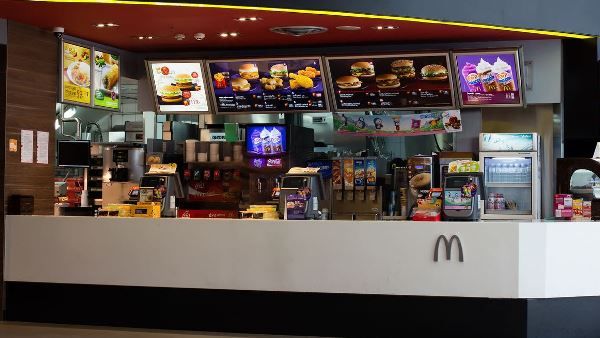
Digital menu boards are now used in several restaurants these days. One of the reasons is because they grab your attention and encourage you to make choices. Digital menu boards can be found in fine dining restaurants, cafés, quick service, and buffet houses. The main reason why digital menu boards are taking off is that they deliver results.
TV menu boards are the digital menu displays that you find in most eateries. With a digital menu board, you can control the customer's experience much more than you would be able to with the old school back-lit panels. You have unparalleled flexibility and ability to promote the various items on your menu to every customer that walks in the door.
Advantages of Using TV Menu Boards
There are several advantages to using these menu boards including: - Quickly updating various items and their prices at any time and making any changes you need in an instant. For example, if you are low on some of your stock or if you are looking to push a particular item on your menu, you can do so immediately.
- In the past you would have to hit the power button to switch off such a display; today, you can control the cost of energy by programming the menu to turn on and off, based on your hours of operation.
- Menu scheduling is done automatically via remote menu programming; this is also known as dayparting. In the morning, you can display your breakfast menu and then in the afternoon your digital display automatically switches to the lunch menu, and then the dinner menu - as per your pre-set times. You are also able to quickly rotate your specials for the day based on the schedule of your choice and at the time you choose.
- Flexibility is another great advantage. You can change the screen layout, placement options and menus at will.
- You also get to enjoy the ability to expand the menu, as your business grows.
- Select from a variety of digital menu board templates or create your template based on your branding.
- Because this is a computerized system, it self-monitors and sends a message to back-end support so they can fix whatever problem is likely to arise. This monitoring prevents you from having blank screens, which can affect your business.
- You can also improve your customer service by using the digital screens for employee training after-hours; also known as internal communications. This helps to improve employee co-operation and camaraderie.
- Reduce wait times since your customers can now use the screens to select what they want to eat proactively.
- Advertise on the screens to introduce a new item on the menu or to push an item that has been moving slowly.
Things to Consider
Now that you understand the benefits of adding digital menu boards that allow you to provide rich, colorful and vibrant pictures or videos, you need to think about the following things: - Based on the size of your establishment, how many digital menu boards are required and what size should they be?
- Where will you have the monitors located? Will it be a wall mount or a ceiling mount?
- How often will you need to update the content on display? Will it be occasionally or frequently?
- What about content? Do you have priority on what should be displayed? Is one item more important than others?
- Branding! You cannot leave this out. How are you going to match your menu boards and the store or restaurant theme?
Selecting the Right TV for Your Menu Boards
It is important that you make the right choice for a television or monitor when you decide to go with digital menu boards. You need to consider the functionality of the set and how compatible it is with the software that you will be using. Durability is another consideration that should be taken into account. Here are some factors for you need to consider when you are selecting the right TV for your establishment: - Brand and Warranty – When it comes to making a selection, you should not let the brand name influence your choice. Many of the major brands have the same composition, even though they may have different brand names. It is important that you look at each model distinctly instead so that you can notice the differences. You will find that many of them offer a warranty of 2 years even though the set usually can last as many at eight years.
- Refresh rate and size – You want to be able to update the data you have on your screen periodically. With this, you will avoid the issue of screen stagnation and high-speed programming will not result in blurry images. The best solution is the 240Hz, which allows you to display as many as 240 images every second. The screen size will depend on how many items you want to display, the area you want to be covered and the customer location.
- LED TV vs. LCD TV – The difference here is mainly the backlighting. LCD uses neon cathode lamps while LED TVs use light emitting diode bulbs, which is soft lighting.
- Outdoor displays – If you go with a standard TV screen, daylight will make it impossible for people to see the screen. You will need to have special screens for a building that is very well lit or for outdoor areas. Whereas indoor displays usually have about 250 candelas for every meter, an outdoor screen will need to have about 700 candelas for every meter at the very least. You should consider these elements when selecting a TV screen for outdoors. Consider having a weatherproof enclosure which will protect the screen. Also consider such things as temperature, which could easily damage the TV.